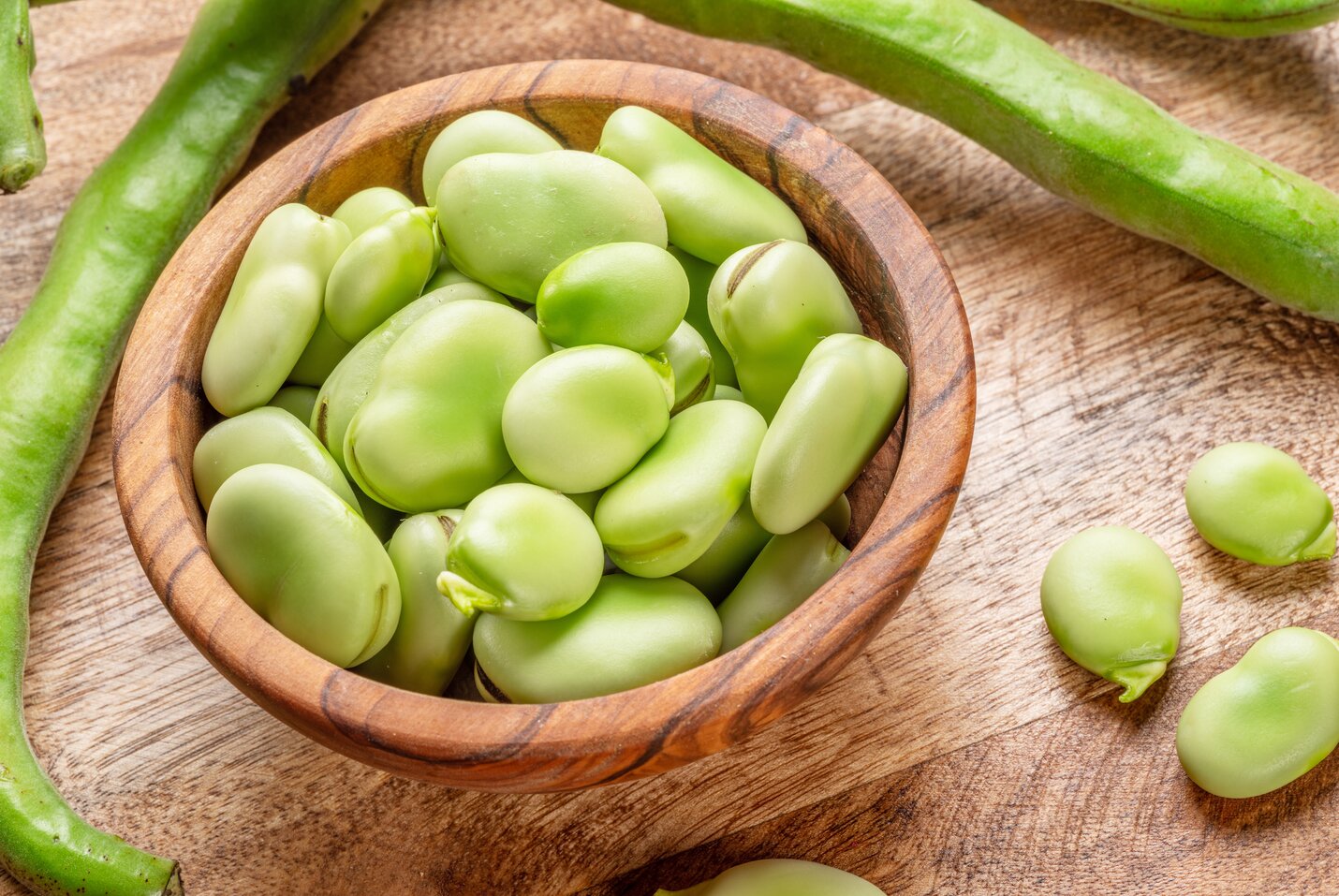Written by Spirekassen 24 Feb 2023 14:06
Broad beans and how to grow them
In my opinion, broad beans are an overlooked food group in Denmark, while in other countries broad beans are regularly enjoyed. I think, broad beans are awesome.
Broad beans can be planted in the greenhouse in early February. As opposed to many other beans, the broad bean can sprout at very low temperatures.
How to grow the broad beans
Plant your seeds in soil, that is adapted for germinating seeds. The seeds must be planted 0,3-0,6 inches/ 1-2cm deep into the soil. Due to the low temperatures, it can take three to four weeks until the seeds germinate. You can let your broad beans grow in the greenhouse or plant the small plants outdoors in April.
Broad beans have a lot of names: in Latin, Vicia faba; in English Fava beans, field bean, broad bean; in German Pferdebohne; and in Danish hestebønne.
The broad bean flower is pollination friendly
The broad bean is not actually related to beans, but instead a member of the pea family and is called a Vicia. The Vicia is related to around 140 species of flowering plants of the pea family.
The broad bean blooms with white flowers that smell and are built like a classic pea flower. The flower is bee friendly and attracts both honeybees, wild bees, and bumble bees. If you want to attract pollinating insects in your greenhouse, it is a good idea to plant broad beans. The broad bean blooms early and is an appreciated food source for the first winged bees. The plant gets around 3 ft tall and doesn’t require a lot of staking.
Broad beans contain a high amount of protein
Broad beans contain a high amount of protein - approx. 32 % of protein. The broad bean is a natural choice if you are a vegan or eat more plant based. The fresh beans need to be parboiled and then they are quite delicious to eat. The broad bean has been cultivated in farming worldwide for a long time. It is one of the oldest known cultivated plants and is used the same way as lentils, pees, and chickpeas.
Broad beans fixate nitrogen
It is unique for the broad bean to belong to the pea family. Members of the pea family are described as leguminous plants. Leguminous plants have rhizobia on their root system. Rhizobia catch and fixate nitrogen from the air and store it in the roots. That means the plant doesn’t require as much fertilizer during cultivation. Plants next to the broad bean are enriched with nitrogen as well. The broad bean is often used as cover crop to prevent nutrients washing out during winter.
Optimal neighbour plants
The broad bean is a great neighbour because its shares its nitrogen depot with its neighbour plants. Great neighbour plants are potatoes, that can be cultivated early in the greenhouse next to the broad bean.
Cooking with broad beans
You can harvest fresh broad beans at the end of May if you grow them in the greenhouse. The seed and legume can be eaten fresh, but the legume is not that exiting. However, if you lightly steam the fresh broad beans and the legumes and then add salt, butter, and lemon juice, they will taste delicious. The fresh broad beans have a membrane that needs to be removed before eating. If you are using dried broad beans, soak them in water for about 12 hours, boil them for a couple of hours and then they are eatable. Broad beans can be used in stews, soups or as a main ingredient in an alternative and protein filled hummus. Broad bean hummus belongs to the so-called superfoods.


